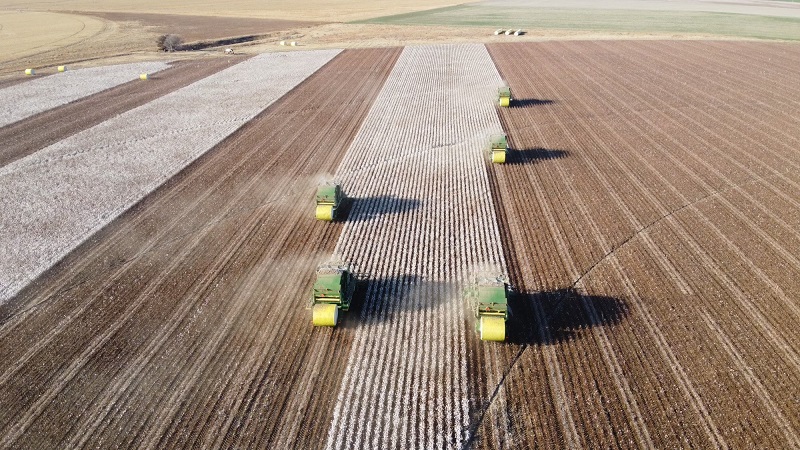Clemson Researchers Studying Robotic Cotton Harvesting

With labor costs reaching more than 10% of farm revenue, Clemson University researchers are working to help American farmers keep more money in their pockets.
Joe Mari Maja, a research sensor engineer at Clemson’s Edisto Research and Education Center, has received a grant from Cotton Incorporated to design and develop a cotton harvester attachment for an Unmanned Ground Vehicle (UGV), or robot. Maja and his team are researching how to build a more affordable harvester that will help farmers reduce labor costs.
“One major challenge American cotton farmers face is competition from polyester produced in China,” Maja said. “China has overproduced polyester, resulting in polyester prices that are about 50% less than cotton. This has resulted in suppressed cotton prices, and cotton farmers are getting less for their crops.”
The United States is the third largest cotton producing country in the world, behind India and China. To get ahead of India and China, American cotton farmers must be able to increase production efficiency while reducing labor costs. Using cotton harvesting machines is one method farmers can use to reduce labor and still pick cotton as soon as the bolls open. But harvesting machines can cost as much as $700,000. In addition to costs, there also are concerns about soil compaction and the chance that rain may fall on open bolls waiting to be picked.
Participants at the 2018 Edisto Research and Education Field Day listen as researcher Joe Mari Maja talks about a cotton harvester attachment he is working to develop for an Unmanned Ground Vehicle. Credit: Clemson Public Service and Agriculture
Minimal costs went into the prototype harvester’s initial design, which consists of a vacuum system that sucks the bolls from cotton plants and deposits the bolls into a storage bin made from a modified five-gallon bucket with a sealed lid. Two hoses, each with 3-holed suction inlets attached to one end, protrude from opposite sides of the bin. A performance test on the vacuum prototype will be performed during the 2018 harvest season. A 3-D printer was used to construct the suction inlets, as well as other parts needed for the harvester. A support frame of aluminum was developed and used to support the different components of the harvester.
Average cost for a UGV for research is $22,000. The cost of robotic cotton harvester prototypes is anticipated to be roughly $4,000.
“But it is envisioned that a new UGV will be developed with the prototype for less than $10,000,” Maja said.
The robot is programmed to go to specific locations within a field to harvest mature cotton bolls. It is guided by a waypoint navigation code installed in a remote computer. Marlowe Edgar C. Burce, a postdoctoral student in charge of programming, navigation and controls/system integration for the project, developed the code. This code works with a Global Positioning System (GPS) to guide the robot.
UGVs are powered by 24V batteries, and have a power distribution of 5V, 12V and 24V on the unit. Depending on the payload, these machines can travel at a rate of about 2 miles per hour for about 2-3 hours before needing a recharge.
In addition to labor costs, cotton producers also are faced with costs associated with increased pest resistance and early indications of bollworm resistance to Bt cotton. The challenge of herbicide-resistant weeds is made worse by the lack of new herbicides. Some farmers have been forced to use crews to hoe fields for needed weed control. If there is an increase in bollworm pressure, farmers would have to scout their fields more often to determine if insect numbers have exceeded an economic threshold. This robotic harvester can be programmed to do selective harvesting and would be able to pick cotton on the field which is ready for harvest before pests or weeds have an opportunity to take over a field.
Maja believes having a robotic cotton harvester robot would be a great help for cotton farmers.
“The cotton harvester robot was successfully assembled and tested on a field within the first three months of its development,” Maja said. “Several adjustments, calibrations, reconfigurations and tests will be conducted to help us improve this technology so that it can be used.”










